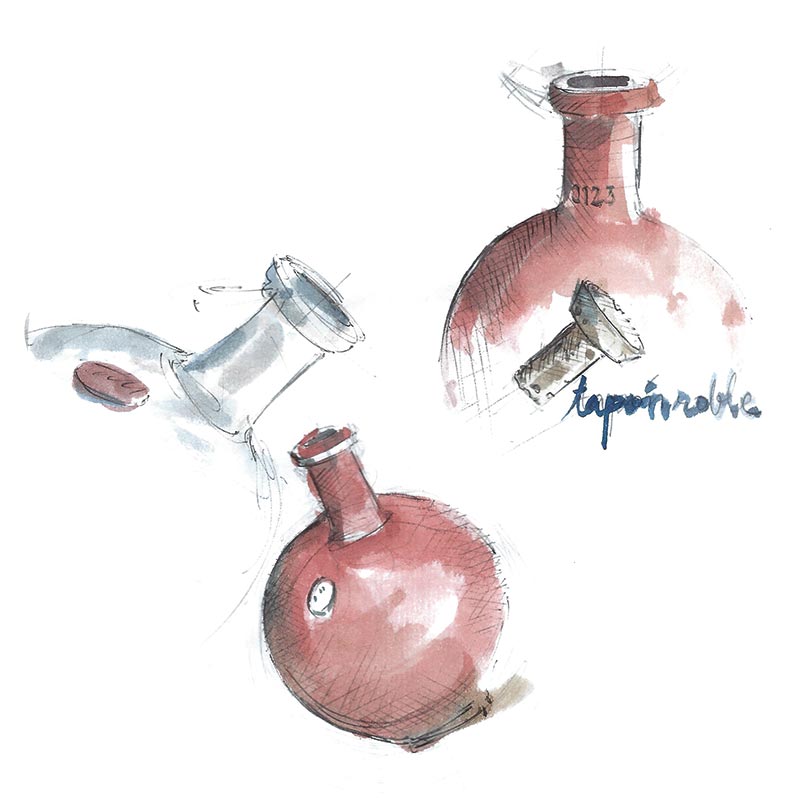
The history of the bottle goes back to 13th century Venice, where some students and scientists began to investigate glass.

Since then, the bottle has undergone changes in both shapes and production methods. It was in the 15 th century, that bottles as we know them now, were first made. In terms of design and manufacture, very few significant changes have been made since then.

The Aragon Bottle was created by Alfonso Soro, a fourth generation potter with a passion for both ceramics and wine. This bottle is made in clay, the properties of which differentiate it from conventional glass bottles ; conserving the wine as well as allowing it to constantly evolve.

The ceramic is a fully opaque material, which gives 100% protection from light, thereby avoiding the potential degrading of wine which is exposed in glass.

Its spherical shape reduces the bottle’s contact with wine by 50%, compared to a
conventional bottle. The walls, thicker by 5mm, give the bottling a great thermal inertia, thus avoiding changes in temperature, which can have a potentially negative effect on the wine.

However, the most innovative characteristic of the bottle is the inclusion of a micro-porous valve in its wall. This allows the wine to continue micro-oxygenating, allowing the evolution of aromas and, most importantly tannins (adding to the wine’s ‘body’). The wine continues to age and improve inside the bottle, gaining a better structure all the time.
After considering the respective wine’s characteristics, the oenologist will decide which of two valves should be used on the Aragon Bottle; either a ceramic one (giving a different degree of porosity) or one made from american or french oak (imbuing a toasted quality).
In the manufacturing process, our bottles are individually numbered by hand. In this way, the client can fully trace the provenance of the product, and enjoy it at its best.

Alma d' Barro (Soul of Clay)
Usamos cookies en nuestro sitio web para ofrecerle la experiencia más relevante recordando sus preferencias y visitas repetidas. Al hacer clic en "Aceptar", acepta el uso de TODAS las cookies.
Este sitio web utiliza cookies para mejorar su experiencia mientras navega por el sitio web. De estas, las cookies que se clasifican como necesarias se almacenan en su navegador, ya que son esenciales para el funcionamiento de las funcionalidades básicas del sitio web. También utilizamos cookies de terceros que nos ayudan a analizar y comprender cómo utiliza este sitio web. Estas cookies se almacenarán en su navegador solo con su consentimiento. También tiene la opción de optar por no recibir estas cookies. Pero la exclusión voluntaria de algunas de estas cookies puede afectar su experiencia de navegación.